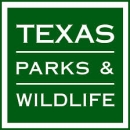Location
States
TexasIntroduction
Pronghorn are adapted to inhabit open spaces such as the grasslands of the northern Chihuahuan Desert. Man-made barriers such as railroads, highways, and fences impede the movement of pronghorn and ultimately restrict distribution and reduce survival. Fences in particular represent a problematic barrier that can be easily modified to allow pronghorn passage. Texas Parks and Wildlife Department (TPWD) and the Borderlands Research Institute (BRI) in Alpine, Texas, work with local landowners to prioritize areas for pronghorn-friendly fence modifications.
Key Issues Addressed
Habitat fragmentation caused by man-made barriers has impacted distribution and survival of pronghorn within their native range in west Texas, contributing to population declines over the last several decades. Restrictive fences make pronghorn more susceptible to drought, predation, and disease. In order to persist in the area, pronghorn must be able to move across the landscape in search of better range conditions. As an endemic and charismatic big-game species in the region, efforts have been made to reduce fragmentation and facilitate movement of pronghorn, making needed resources more accessible.
Pronghorn seldom jump fences; however, most pronghorn will traverse fences by crawling underneath them. Common problems with fences that negatively impact pronghorn movement are:
- Net-wire fencing and barbed-wire fencing with a low bottom wire are usually complete barriers.
- Pronghorn attempting to locate openings will follow fences into corners, which predators--who have learned this predictable behavior of pronghorn--use to capture pronghorn.
- Even where fencing is pronghorn-friendly, tumbleweeds can accumulate against fences and create blockages. Fence removal is therefore more effective than fence modification alone.
- When pronghorn make their way through a restrictive right-of-way fence along a highway, they can get trapped along the highway, leading to collisions with vehicles.
Old, unused fences and accompanying fence posts should be completely removed. Priority areas for implementing mitigation features that allow pronghorn to move more freely are identified as fence corners, highway right-of-way fences, and known travel corridors. Effective modification options that allow pronghorn passage while still effectively controlling cattle are:
- Raise net-wire fence to at least 18 inches off of the ground (20 inches or higher is better) for at least 20 yards of every ½ mile of fence.
- Replace the bottom strand of barbed-wire with a smooth bottom wire that is at least 18 inches off of the ground.
Project Goals
- Decrease habitat fragmentation through targeted fence modifications
- Increase distribution and survival of a native wildlife species
- Reverse population declines of pronghorn within the Trans-Pecos region of far-west Texas
Project Highlights
- Learning from Research: Recent studies on translocated pronghorn with GPS collars have shown the extent of fencing impacts on pronghorn, determined that many fences are absolute barriers, and helped pinpoint problem areas.
- Outreach: Using local media outlets, social media, brochures, presentations, and direct meetings with landowners to communicate the problems associated with fencing, and how these problems tie into the behavior and needs of this charismatic species, has given residents information to apply effective management strategies and has increased understanding of ecosystem function.
- Landowner Involvement: Landowners and state agencies are working together to implement work on private lands. Fostering strong relationships through personal communication and outreach is essential in Texas, where roughly 95% of land is privately owned.
- On-the-Ground-Actions: Project partners have put in over 1,700 fence modifications to existing restrictive fence. The work is done free of charge to the participating landowners. The Natural Resource Conservation Service (NRCS) also provides financial assistance through their pronghorn priority areas of the Environmental Quality Incentives Program (EQIP) to help replace restrictive fencing.
Lessons Learned
- Many local residents have been concerned by the decline of this iconic species within the Trans-Pecos region of Texas. Outreach efforts were effective in engaging regional land owners and showing them how they can directly help improve pronghorn habitat through fence modifications. Showing landowners mapped results from GPS movement studies has helped illustrate how much of an impediment fencing can be and has inspired action.
- This program has led to improved range access for pronghorn. More than 310,400 acres of grassland habitat have been connected via fence modification.
- Regional pronghorn translocation efforts have benefited from fence modification programs. Recently translocated pronghorn are moving greater distances across the restored landscape than those from previous translocations into the region. Additionally, greater habitat connectivity has contributed to higher survival and fawn production rates of translocated pronghorn.
Next Steps
Monitoring Success: Recently translocated pronghorn are outfitted with GPS collars to help researchers evaluate the efficacy of strategic fence modifications on pronghorn movement and habitat connectivity.
- Continue outreach and fence-modification efforts throughout west Texas grasslands
- Continue to communicate to landowners about cost-sharing incentive programs through the NRCS and other partners such as National Fish and Wildlife Foundation (NFWF) for fence modification and replacement on private lands
- Evaluate efficacy of fence modifications and impact on pronghorn movement and habitat connectivity
- Use GPS collars to locate actual fence and road crossing hotspots to inform future connectivity restoration efforts
- Examine best management practices to minimize the impact of right-of-way fences, highways, and railways on pronghorn movement
Funding Partners
- Texas Parks and Wildlife Department
- US FWS Wildlife and Sportfish Restoration (Pittman-Robertson Funds)
- Sul Ross State University-Borderlands Research Institute
- Texas Parks and Wildlife Foundation
- Trans-Pecos Pronghorn Working Group
- USDA Aphis Wildlife Services
Resources
- TPWD Brochure:Landowner’s Guide to Pronghorn Friendly Fences
- NRCS Cost-Sharing Financial Assistance for Fence Modifications
- TPWD Video: Keeping it Wild: Pronghorn Fence Modification
- Texas Parks and Wildlife Department Website
- Borderlands Research Institute Website
- Gann, W.J., et al. (2007). Trans-Pecos Pronghorn Restoration and Research Report
Contact
- Shawn Gray, Mule Deer and Pronghorn Program Leader, Texas Parks and Wildlife Department, shawn.gray@tpwd.texas.gov
Case Study Lead Author
- Ashlee Simpson, CART Graduate Research Assistant, University of Arizona
Suggested Citation
Simpson, A. C. (2018). “Pronghorn-Friendly Fence Modifications in West Texas Grasslands.” CART. Retrieved from https://www.fws.gov/project/pronghorn-friendly-fence-modifications.





